- This feature was published in RAIL 819 (February 1-February 14 2017), and is available digitally on Android and iPad.
It was back in 1988 when the first Class 319 entered traffic on Thameslink. These four-car, dual-voltage electric multiple units (EMUs) had been ordered by Network SouthEast to serve a project commissioned two years earlier, and were delivered in two batches (1987-88 and 1990).
They transformed travel across London. Today, it’s hard to believe that the Snow Hill Tunnels they ran through had been closed, yet this deal was the start of what turned into the Thameslink 2000 project. Next year, 30 years after the tunnels were re-opened, there will be 24 trains per hour running through the tunnels.
Fast forward from 1988, and the trains are only now finally being replaced. This was supposed to have happened more than half a decade ago - they were earmarked for a move to the North West as electrification spread, as well as to parts of the former Western Region.
Of course, that has not gone to plan. There are currently 20 Class 319s with Northern, with a further 12 to follow. And at the present time, there are no formal plans for any to move to Great Western Railway.
But what the delays to various schemes have done, in particular the changes in Government policy surrounding train cascades, is to highlight areas of oversupply and undersupply in the train fleet. Fleets of EMUs dating from the 1980s are seemingly without a future. Questions surrounded the Class 319s’ new homes, especially with more new trains being ordered.
Then the Anglian deal was announced in August 2016 (RAIL 807). This included a fleet replacement. Suddenly, as well as the ‘319s’ displaced from Govia Thameslink Railway, the EMU market was to be flooded with Anglian Class 317s and Class 321s. Short-term leases were planned and some cascades that will cover a few years have been signed, but by and large 232 four-car EMUs dating from the 1980s are soon to become homeless. The EMU market is crowded.
And yet the diesel multiple unit (DMU) market has, over the past few years, been written off as a poor investment proposition.
Porterbrook introduced what currently remains the last round of DMUs in the UK mainland, the London Midland Class 172s. But that was back in 2011/12, and it was reckoned that these would be the last DMUs required - wires were being erected, and the market was for EMUs.
But as we head into 2017, things have changed. Northern has bought a fleet of DMUs from Construcciones y Auxiliar de Ferrocarriles (CAF), but there remains a chronic need for more of the type.
Plans for 200 diesel trains had been scrapped by the Government in 2009, when it was announced that the Great Western Main Line would be electrified. Thus the market is short, especially with delays in electrification. Indeed, in December 2016 ScotRail announced it needs more diesel trains, while three operators are using locomotive-hauled trains on routes where DMUs are active - there are just not enough DMUs for this increasingly crowded railway.
Enter Porterbrook and its Flex train, the brainchild of Helen Simpson. For the past two years, the Engineering and Supplier Development Manager at the rolling stock leasing company has been developing a solution for the market. Using displaced Class 319s as the starting point, she has examined what the rail market needs and what technology is available
At the time her work started, trials were being planned (and were subsequently undertaken) with an Independently Powered Electric Multiple Unit (IPEMU). This trial, conducted on the Harwich branch in early 2015, involved converting a Class 379 Electrostar to operate using batteries as well as overhead line electrification (RAIL 769).
This helped fuel Simpson’s research: “When I started this project, battery technology was looking like an interesting option for the industry. I wondered whether this could be used on the Class 319s,” she tells RAIL.
“I initially explored both battery and hybrid technologies as options that would deliver a mid-life EMU capable of travelling off the electrified network.”
Simpson talks of “range anxiety” as being a concern, when looking at IPEMU. How far the train could actually operate on battery power is something train operators constantly ask, she says.
“Batteries are definitely doable, but rail will have to overcome the current range limitations for traction power. We think traction battery technology will give you a range of around 20km to 30km before needing recharging, and this is not enough for most operators.”
Cost was another problem. “Eye-watering” is Simpson’s description of the whole-life cost when compared with the value of a mid-life train.
“I looked at the size and weight of the components. There is space on the trailer cars, but you start to add weight. And the more weight you add, the more batteries you need. It could be done, but it would have a high weight penalty and is just so expensive.”
Porterbrook Commercial Manager Mark Isbern tells RAIL that the whole-life cost is key for the work. “You have ten years, maybe,” he says.
Simpson interjects that, currently, rail application traction batteries typically have three to five years’ life before they need changing.
“So we couldn’t make it stack up,” she says. “Super-capacitors are interesting because they are small, light, efficient and relatively low-cost for a given power output. They are also quick to recharge. For these reasons, I might select them for discontinuous electrification schemes, or for areas that are difficult to electrify, but they are limited to just a couple of kilometres so weren’t suitable for the Class 319 project.”
The next option was hybrid technology.
Says Simpson: “The optimum solution in terms of weight, space and power output for the range that we wanted would be to use a diesel engine supported by batteries for peak acceleration. We looked at timescales, cost and complexity for this, but it would have taken too long to develop.”
Furthermore, Isbern points out that a hybrid solution needs to be closely tailored to a particular duty cycle with sufficient recharging time. Again, range anxiety becomes a problem, particularly during times of disruption when a hybrid train might suffer severely degraded performance.
Consequently, the diesel-only genset option emerged as Porterbrook’s preferred way forward. Says Isbern: “This gives maximum range, maximum flexibility to operators, and the best cost-risk-benefit ratio.”
To prove the concept would work, Porterbrook has teamed up with Wabtec/Brush Traction to develop a feasibility study, including detailed modelling work.
Simpson wanted Brush to really test the concept before any metal was cut, revealing: “I wanted to test it against the worst route I could imagine.” After speaking with Northern, she chose Manchester Piccadilly-Buxton: “It’s uphill all the way and has 12 stops.”
The ‘319’ Flex train performed admirably in modelling. It was able to complete eight return journeys per day to the current timetable, in effect performing like a four-car Class 15x formation.
Simpson says other routes have been modelled across the country, and names Great Western, Wales and the West Midlands as areas she has investigated.
“My motivation was around making the ‘319’ more attractive to the market. Once you think bi-mode you look at different routes and offerings. Electrification delays have supported our case, but they are not the reason we are doing this.”
The range was found to be limited only by the size of the fuel tanks. Says Simpson: “We set ourselves ambitious targets for range akin to a traditional DMU. Our modelling work shows that we can go for two days on a very arduous diagram.”
What exactly is the plan?
Simpson says: “A four-car ‘319’ Flex train will have modified driving vehicles, where we fit a diesel engine and alternator under the floor.
“We propose using a MAN D2876 engine - this is used in Europe and it’s suitable for underframe use. Its key attractions are the compact depth of the engine, the fact that it is rail approved, and that it is compliant with the latest stage IIIB low emissions regulations.”
The diesel engine is linked to the alternator, which is manufactured by ABB and which is also used with the engine elsewhere in Europe, thereby meaning the complete drivetrain is proven. This reduces technical risk from the scheme.
Simpson explains: “The reason the engine is so efficient is not just because it’s modern. It runs at maximum efficiency all the time, whereas the engine in a diesel hydraulic DMU cycles through the rpm range when it’s running. This engine just runs at a near constant speed, in its maximum efficiency range, feeding the existing 750V line.
“We are effectively tricking the tracking system into thinking it is still a DC unit. It is effectively replacing the DC operation with diesel, but we could still retain the shoegear and have a tri-mode ‘319’ if it was needed.
“All the equipment is proven already. Brush, in particular, has a good record with its electrical interface work and conversions of this nature. It has converted ‘47s’ to ‘57s’ and upgraded the GB Railfreight ‘73s’, and this is much simpler than those projects. It is a very credible supplier.”
Isbern acknowledges that a good option for a tri-mode Class 319 would have been London Overground, but with the Gospel Oak-Barking route now being electrified that particular customer has been eliminated.
Most of Porterbrook’s work to date has focused on the Class 319 Flex, but the concept could be deployed on other fleets. Isbern says the Marshlink route from Ashford, deep in third-rail territory, is an option - it only needs DC plus diesel power.
“The Flex concept could be deployed on fleets such as Electrostar and displace DMUs for use in other parts of the country,” he says.
Simpson says there is no Flex ready yet, but work has begun. And timescales for the project are impressive.
She explains: “When production is up and running, each ‘319’ will take four to six weeks to convert. The rafts will be built in advance and simply be bolted on to the train during conversion at works, thus minimising downtime.
“The design of the control system is largely developed and an Ethernet backbone will be used to monitor output and balance loading between the two engine rafts. The physical modifications needed are relatively straightforward and are largely limited to the driving vehicles - fitting the new engine/alternator raft, some new control technology and some minor relocation of existing equipment. It is a modular concept and it is cost-effective as a result.”
She admits that while the first train will take longer, as per all usual rebuilds and refurbishments, the timescales will improve dramatically when the production is up and running. Initially eight Class 319s will be converted, and form part of the Northern fleet of 32.
“The first four could enter traffic in December 2017,” Isbern tells RAIL.
The ‘319s’ to be converted have been identified by painted number already. Initially they will all be ‘319/4s’, but any of the four sub-classes could be used. Isbern says it makes sense to use the ‘319/4s’ first as they are the most readily available. All of Northern’s Class 319s in traffic currently are ‘319/3s’, but ‘319/4’ Flex units will be able to couple and work in multiple with any ‘319’ sub-fleet.
Northern will be responsible for maintenance. Depending on their diesel utilisation, Isbern is not convinced that the new engine rafts will need overhauling during the lifetime of the Northern franchise (which began in April 2016 and will run for nine years, plus a one-year option). This means that trains introduced in December 2017 could run for nine years without the need to visit works for major engine attention.
Isbern adds: “We don’t know yet which exact routes Northern will use the Flex units on. We know they outperform a ‘150’ on a number of different routes and diagrams, and will certainly outperform a Pacer. We are working closely with Northern on approvals for their selected routes.”
Certainly routes in the North West where new OLE is being erected, or where journeys are mostly under the wires, are likely future candidates.
Simpson adds: “The costs benefit model is interesting. Under the wires the pantograph can go up and the engine is switched off. In diesel mode, the engine is running at maximum efficiency through the existing traction equipment and is as fuel-efficient as a new DMU. Overall, you end up with a much more efficient train compared with running diesels under the wires.
“Track access is marginally more than an existing ‘319’, but comparable to a mid-life DMU. It is roughly the same weight as two ‘150s’ and should give a comparable track access charge. The fuel savings of only running diesel engines when you need them, and running them at a maximum efficiency, give a significant total energy cost saving when compared with a pure DMU option.”
Simpson explains that when running as an EMU the top speed for Flex is 100mph. She adds that, being conservative, when running on diesel it’s likely to be around 91mph-92mph. “Really detailed point-to-point analysis shows what it does well, and which routes and journeys will deliver the biggest benefits to operators,” she tells RAIL.
So how far has Porterbrook got?
“We have done all the concept design work, gauging work, and weight analysis, structural modelling, braking, journey time and performance calculations have all been completed,” says Isbern.
“Detailed design is now well under way. We know the suppliers we’ll use, and it is about getting into the details. The materials are ordered - we are really cracking on with it.”
Porterbrook and Northern have yet to decide on an interior, but discussions are in progress.
One unit has moved to Loughborough (319427), but this is not one of the eight destined for Northern. Instead, it will be deployed for dimensional analysis. Only so much can be planned on paper and computers, and this will enable the various teams to evaluate the train and ensure everything fits.
Isbern reveals that when the first production unit is released from Loughborough, it will move to Allerton depot, where Northern maintains its other ‘319s’. Refuelling will be no problem, given that this is also a DMU depot.
The predicted reliability of the units is measured in miles per technical incident (MTIN) and is not too different from a ‘319’ with a target level of 20,000 miles per incident, says Isbern.
He is keen that Flex is marketed to other areas beyond Northern. The ‘319’ fleet is in good condition and all of the units selected for Flex are also already PRM-TSI (Persons of Reduced Mobility - Technical Specifications for Interoperability) compliant, which means they can be used beyond January 1 2020. “We can see Flex units operating beyond 2025,” says Isbern.
This is a project that seems the right option for right now. The nationwide shortage of DMUs has even been debated in the Commons by Rail Minister Paul Maynard in recent weeks. This low-cost alternative to brand new trains offers train operating companies the opportunity to introduce refurbished bi-mode trains using an asset that has plenty of life in it. It’s surely a win-win for all those involved?
PANEL
Where could they go?
Northern has signed for eight Class 319s fitted with diesel engines. The rest of the fleet has yet to find a home, but discussions have taken place between various operators and rolling stock leasing company Porterbrook.
With various Network Rail overhead line electrification schemes delayed, there is the opportunity for the ‘319s’ to be deployed on routes where diesel multiple units currently operate under the wires. Certainly, in the North, the likes of Windermere could be served by a ‘319’ running under electric power for the majority of the journey.
Likewise, they could prove a useful option for Northern when the trans-Pennine route is wired via Huddersfield, certainly when that route is shut and they can run via the Calder Valley.
But it’s not just Northern that can deploy them. Porterbrook has discussed the trains with Great Western Railway (GWR), where there are options to run from London Paddington under the wires and then run along Thames Valley branches under diesel power. Likewise, they could reach the likes of Westbury from London by using OLE to Newbury.
The beauty of the dual-mode capability will not only be to offer a low-cost alternative to a brand new bi-mode, but also to open up opportunities for journeys that perhaps were not there previously.
The Class 319 will effectively be a rebuilt, refurbished 1980s DMU, and for operators such as GWR that could play a key part in the new franchises. Various internal cascades involve two-car and three-car Class 150s and ‘158s’, but the Flex could also be used as an option - offering flexibility and capacity.
Another possible home could well be the Welsh Valleys, as questions remain over the deployment of trains there in the new franchise. Politically new trains are wanted, but is there the cash?
There appears to have been no repetition in Wales of the fervent national campaign to rid the lines of Pacers (as in the north of England), but the Class 142s do have to be withdrawn by January 1 2020. With no decision made yet on electrification, but with the introduction of OLE to Cardiff Central, it is feasible that four-car ‘319’ Flex bi-mode trains could offer a solution to capacity concerns while also using some of the OLE if it is available?
The Midlands could also be a possibility. Porterbrook has studied routes around Birmingham, and there have been discussions within Network Rail about diverting commuter trains from New Street to Snow Hill. If these run under the wires, they could use a 100mph EMU capability before using the same train’s 90mph DMU capability to continue the journey.

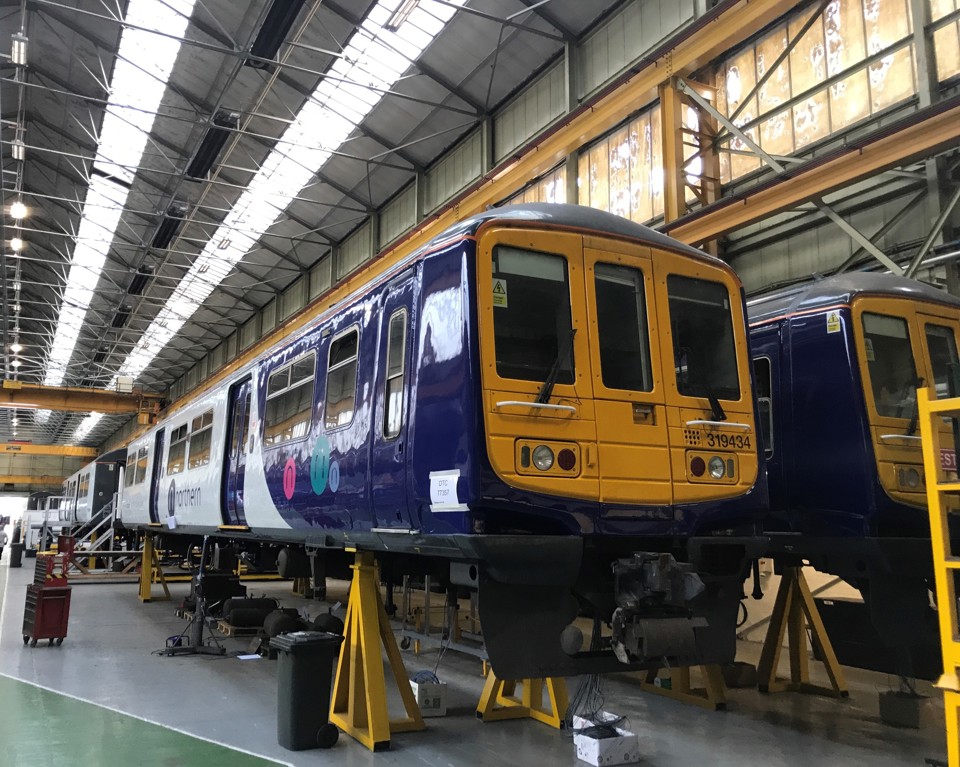
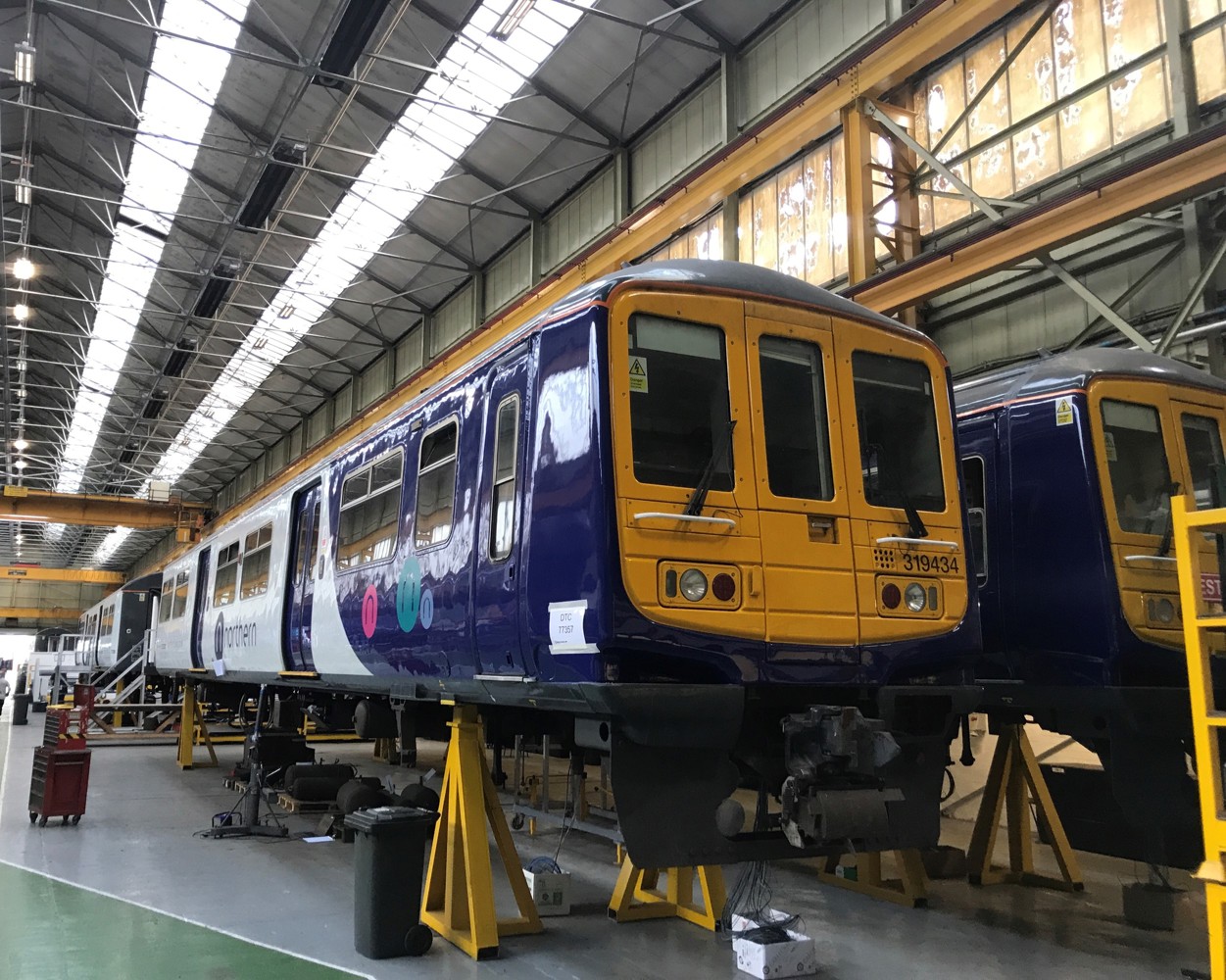
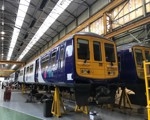
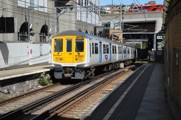
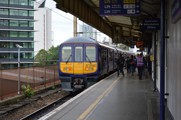
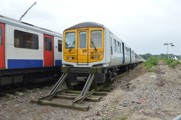
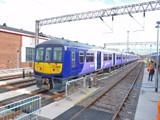















FrankH - 22/01/2018 20:09
Northern will need more than 8 flex units. Manchester and Preston - Barrow in Furness services, Manchester - Buxton, Hazel Grove - Preston (Blackpool when the OHLE is completed) are prime candidates.